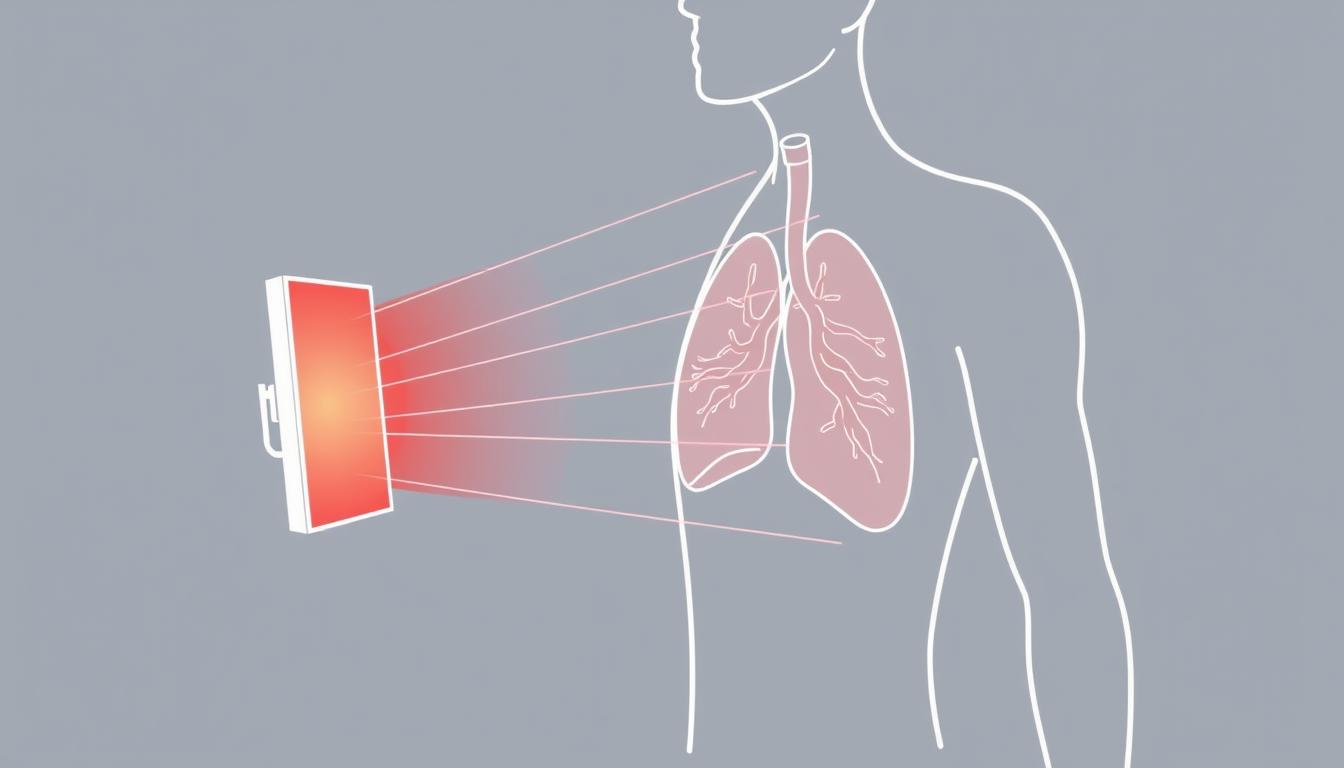Living with Chronic Obstructive Pulmonary Disease (COPD) means navigating daily challenges that affect your breathing and quality of life. While conventional treatments remain essential, emerging research suggests red light therapy may offer complementary benefits for managing COPD symptoms. This guide examines the scientific evidence behind this approach and explores practical home device options that could help support your respiratory health journey.
Understanding COPD and Its Challenges
Chronic Obstructive Pulmonary Disease affects approximately 16 million Americans, according to the CDC, though millions more may have undiagnosed cases. This progressive condition causes airflow blockage and breathing-related problems, primarily through two main forms: chronic bronchitis and emphysema.
Comparison of healthy lungs versus lungs affected by COPD
COPD symptoms typically include persistent cough, increased sputum production, shortness of breath (especially during physical activities), wheezing, and chest tightness. These symptoms progressively worsen over time, making everyday activities increasingly difficult.
Standard treatments include bronchodilators, corticosteroids, pulmonary rehabilitation, and in severe cases, oxygen therapy or surgery. However, many patients continue searching for complementary approaches to enhance their treatment plans and improve quality of life.
How Red Light Therapy Works for Respiratory Health
Red light therapy (RLT), also known as photobiomodulation or low-level laser therapy, uses specific wavelengths of red and near-infrared light (typically 630-850nm) to stimulate cellular function. Unlike UV light, these wavelengths are non-damaging and can penetrate tissue to reach deeper structures.
Red light wavelengths penetrating tissue to reach lung cells
When applied to the chest area, these light wavelengths can reach lung tissue and trigger several beneficial biological responses:
Clinical Evidence for Red Light Therapy in COPD Management
Research into red light therapy for respiratory conditions has shown promising results, though it remains an emerging field. Here are key findings from human clinical studies:
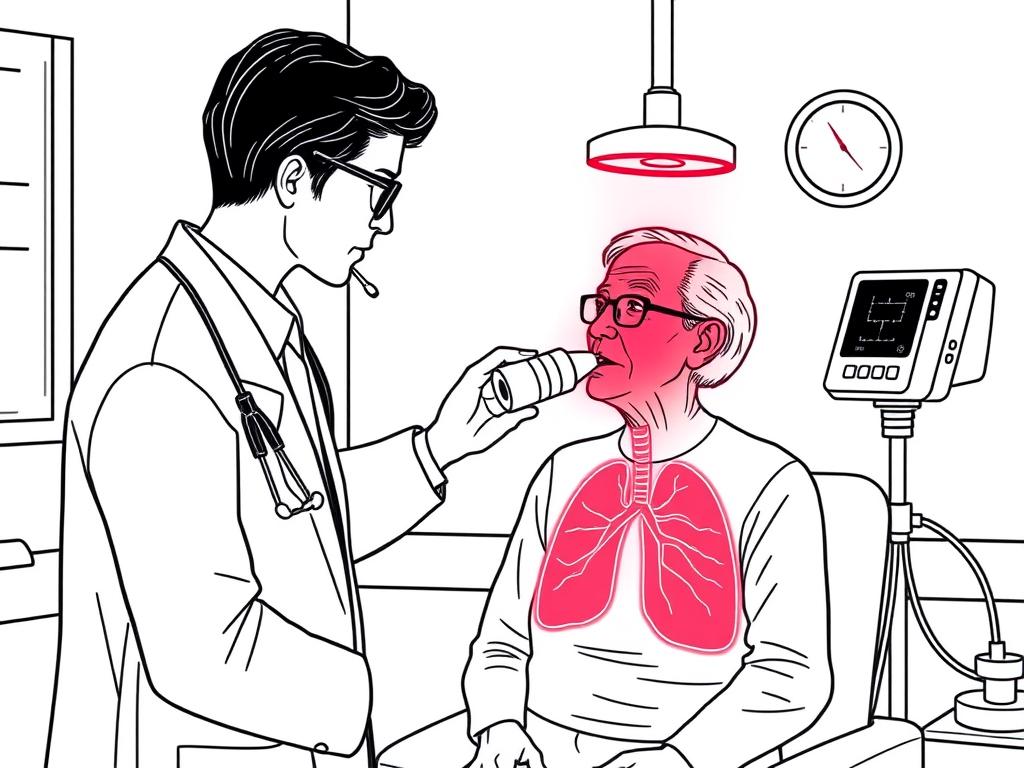
Clinical research setup for studying red light therapy effects on COPD
“Photobiomodulation of 630 nm application on pulmonary muscles improves the functional capacity of lungs in COPD individuals.” — de Souza et al., 2020
A randomized, placebo-controlled trial by Miranda et al. (2019) found that COPD patients receiving red light therapy showed significant improvement in the six-minute walking test compared to the control group, indicating enhanced exercise capacity.
Another study by de Souza et al. (2020) demonstrated that applying red light therapy (630nm) to respiratory muscles of COPD patients improved muscle strength and endurance, potentially reducing the work of breathing.
Research by da Cunha Moraes et al. (2018) revealed that low-level laser therapy significantly reduced inflammatory markers in lung tissue, including interleukins IL-1, IL-6, and TNF-α, which are elevated in COPD.
Important: Red light therapy should be considered a complementary approach to standard COPD treatments, not a replacement. Always consult your healthcare provider before starting any new therapy.
Comparing Red Light Therapy Devices for Home Use
When considering red light therapy for COPD, selecting the right device is crucial. Several factors determine effectiveness, including wavelength combination, power output, treatment area coverage, and ease of use.
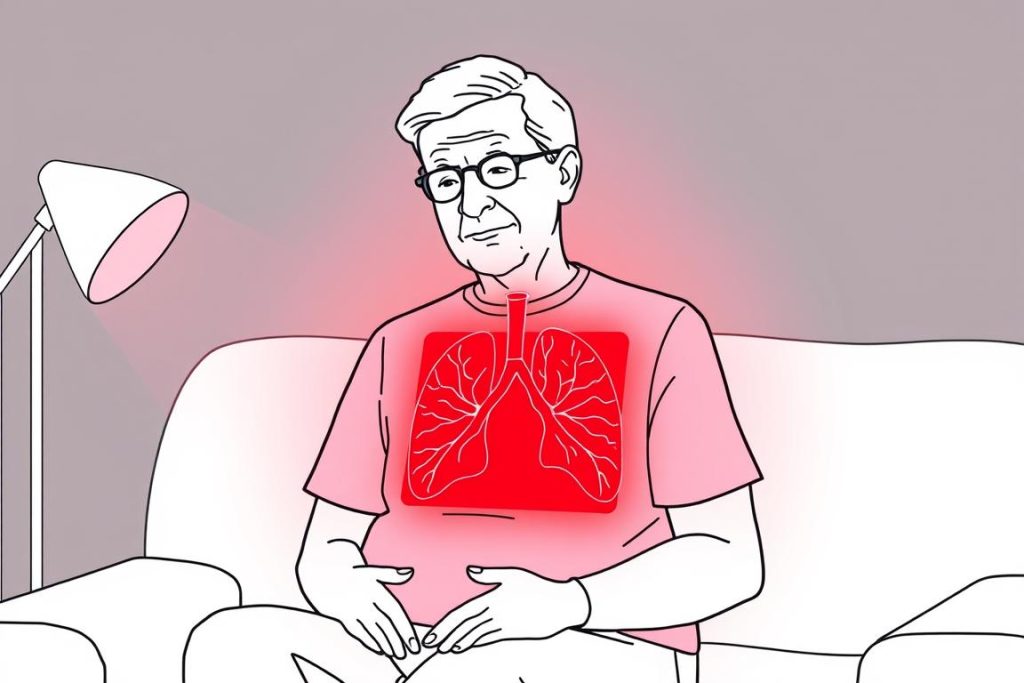
Home setup for red light therapy treatment targeting the chest area
Key Features to Consider
Leading Device Options
RLT Home Total Spectrum Compact
The Total Spectrum Compact (30″ × 12″, 216 LEDs) offers an ideal balance of coverage and convenience for COPD applications. Its seven-wavelength combination includes the critical 660nm and 850nm wavelengths that research shows beneficial for lung inflammation.
The mid-size design efficiently covers the entire chest area while remaining manageable for home use. The pre-built “Pain & Inflammation” mode is particularly relevant for respiratory applications.
PlatinumLED BioMax
PlatinumLED’s BioMax series is known for its high irradiance levels, which may allow for deeper penetration into lung tissue. The devices offer five wavelengths and come in various sizes to accommodate different treatment areas.
The high power output potentially means shorter treatment sessions, which can be beneficial for those with limited energy due to COPD symptoms.
Mito Red Light
Mito Red Light offers user-friendly devices with straightforward operation, making them accessible for those new to red light therapy. Their panels focus on the core 660nm and 850nm wavelengths.
The simplified approach may be appealing to COPD patients who prefer less technical complexity in their treatment devices.
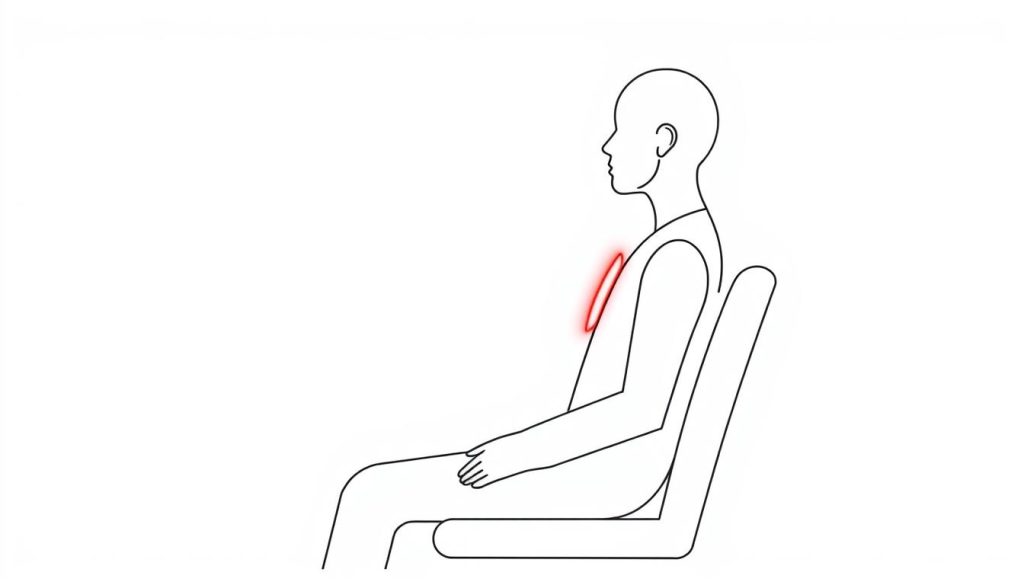
Recommended positioning for optimal red light therapy treatment of the chest area
For comprehensive COPD applications, the RLT Home Total Spectrum Ultra (64″ × 12″, 480 LEDs) offers full-body coverage with its motorized stand, allowing you to lie beneath it for consistent treatment of the entire torso. This can be particularly beneficial for addressing both the primary lung area and supporting respiratory muscles.
Practical Guide to Using Red Light Therapy for COPD
Implementing red light therapy effectively requires understanding proper protocols and realistic expectations. Here’s how to approach treatment for respiratory support:
Treatment Protocol
Step-by-step process for a red light therapy session targeting respiratory health
What to Expect
Results from red light therapy for respiratory conditions vary by individual. Some users report noticing subtle improvements in breathing comfort within 2-4 weeks, while others may require 8-12 weeks of consistent use before experiencing noticeable benefits.
Common reported effects include:
Tracking your symptoms before and during red light therapy can help you and your healthcare provider assess its effectiveness for your specific situation. Consider keeping a simple daily log of breathing comfort, activity levels, and medication usage.
Safety Considerations and Potential Side Effects
Red light therapy is generally considered safe with minimal side effects when used properly. However, there are important considerations, especially for those with respiratory conditions:
Safety measures when using red light therapy devices at home
Safety Profile
Precautions
The RLT Home devices feature zero measurable EMF at treatment distance (≥10 cm) and less than 1% flicker, making them particularly suitable for those with sensitivity concerns or who require frequent, extended treatments.
If you experience any worsening of respiratory symptoms during red light therapy, discontinue use and consult your healthcare provider immediately.
Integrating Red Light Therapy with Conventional COPD Treatment
Red light therapy works best as part of a comprehensive approach to COPD management. Here’s how to effectively integrate it with standard care:
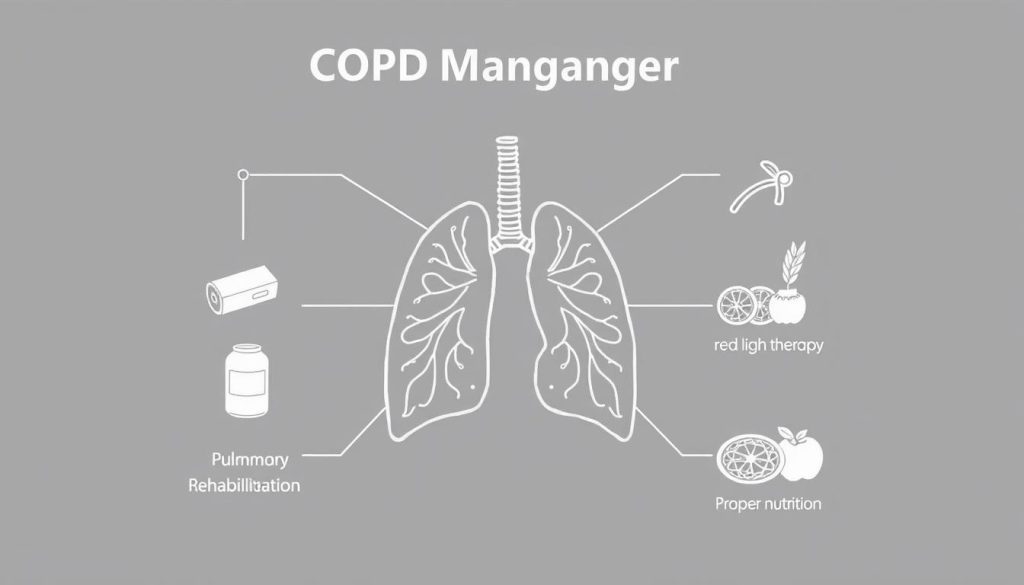
Integrated approach to COPD management including red light therapy
Should I continue my prescribed medications while using red light therapy?
Absolutely. Red light therapy is a complementary approach and should never replace your prescribed medications or treatment plan. Continue using your bronchodilators, corticosteroids, and other prescribed treatments as directed by your healthcare provider.
How does red light therapy fit with pulmonary rehabilitation?
Red light therapy can potentially enhance the benefits of pulmonary rehabilitation by supporting muscle recovery and reducing inflammation. Some users report improved exercise tolerance when combining these approaches. Consider scheduling red light therapy sessions after rehabilitation exercises to potentially aid recovery.
Should I inform my doctor about using red light therapy?
Yes, always keep your healthcare team informed about any complementary therapies you’re using, including red light therapy. This ensures coordinated care and allows your provider to monitor for any interactions or effects on your overall treatment plan.
The Total Spectrum Compact from RLT Home offers a convenient option for integrating light therapy into your daily routine. Its pre-programmed modes simplify the process, while the research library provided to users helps you stay informed about the latest findings relevant to respiratory applications.
Conclusion: Is Red Light Therapy Right for Your COPD Management?
Red light therapy represents a promising complementary approach for COPD management, with growing scientific evidence supporting its potential benefits for reducing inflammation, supporting respiratory muscle function, and improving overall lung health.
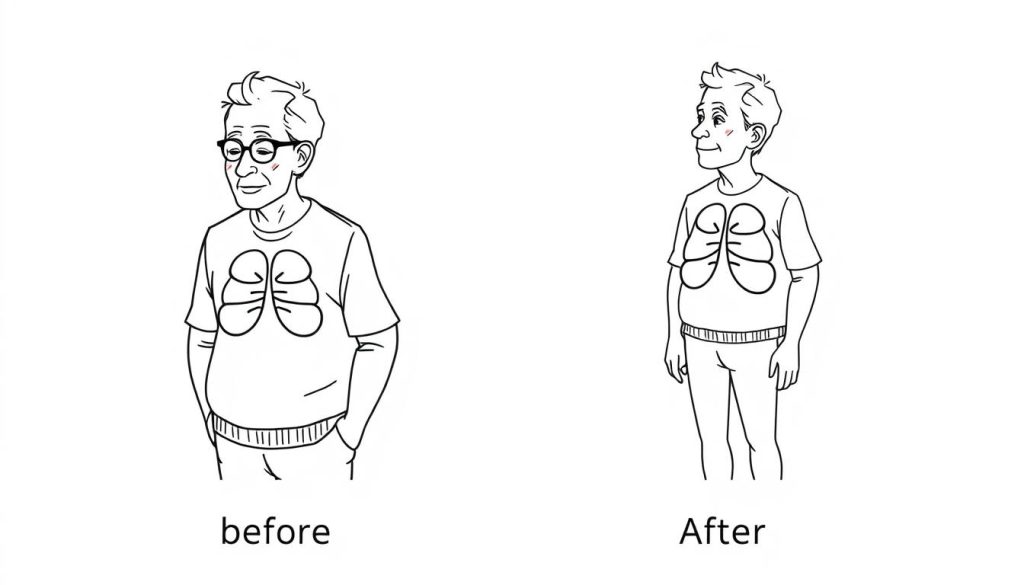
Potential improvements in breathing comfort with consistent red light therapy
While not a cure for COPD, red light therapy may help manage symptoms and improve quality of life when used consistently as part of a comprehensive treatment approach. The non-invasive nature and minimal side effects make it an attractive option for those seeking additional support beyond conventional treatments.
Take the Next Step in Your Respiratory Health Journey
Ready to explore how red light therapy might benefit your COPD management? Compare leading red light therapy panels to find the option that best suits your needs, budget, and treatment goals.
Remember to consult with your healthcare provider before starting any new therapy, and approach red light therapy as a complement to, not a replacement for, your prescribed COPD treatment plan.
— David, independent RLT researcher

